_2008/16157winfreydra_00000009109.jpg” border=”0″ ” align=”right” alt=”world champ scott stillings’ stock eliminator 1969 chevy camaro ihra. (photo courtesy of all precision collision repair)”/>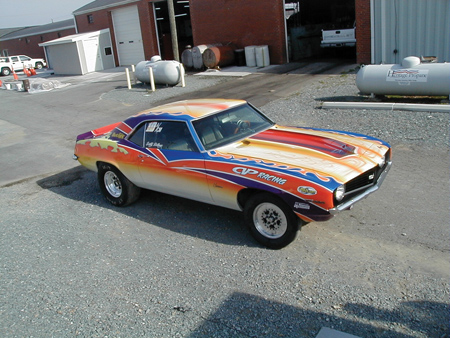
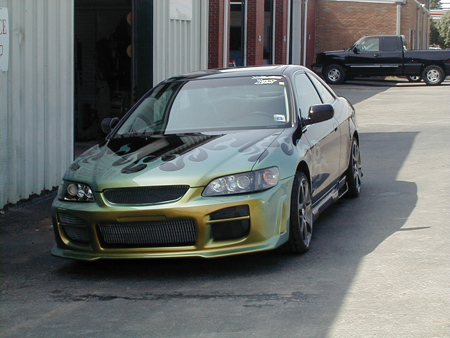
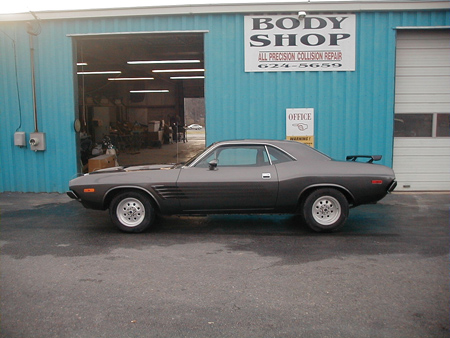
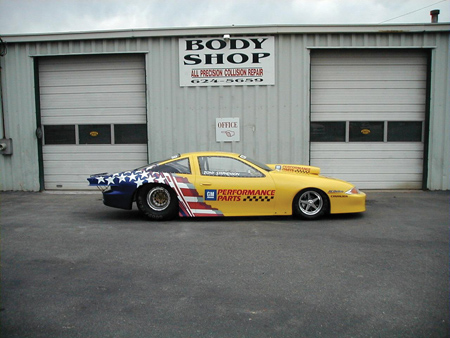
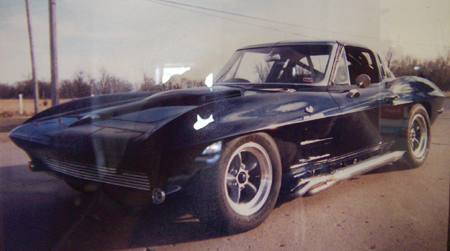
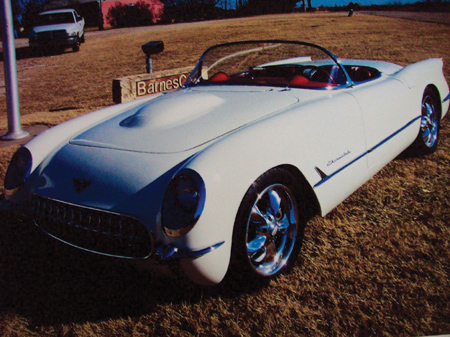
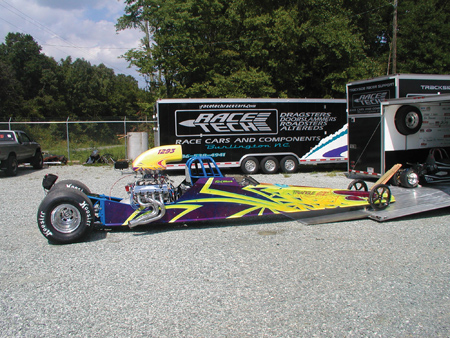
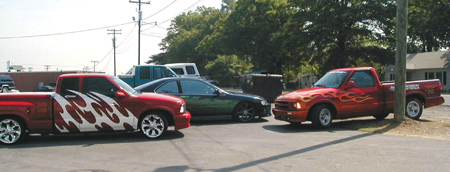 Car customization has hit Hollywood. And that means big bucks for collision repair shops.
Car customization has hit Hollywood. And that means big bucks for collision repair shops.
Television shows like “Pimp My Ride,” “Trick It Out” and “Overhaulin’” have whetted consumers’ appetites for putting their own personal stamp on their rides, and for the savvy body shop owner, customization represents a great opportunity to bring in additional revenue. Restoration has also benefited from the spotlight, with car enthusiasts seeing the return of their vehicles to their original pristine conditions as an increasingly smart investment.
And there’s been no better time for body shops to explore other profit centers outside collision repair. Profits are at an all-time low because of a variety of factors, including steering and fewer repairs as the result of more total losses (due to the complexity of vehicle technology), the rising cost of fuel (which encourages motorists to drive less frequently) and the increasing prevalence of accident-avoidance technology.
Bob Winfrey has seen firsthand the effect of steering on his bottom line. The owner of All Precision Collision Repair in Marshville, North Carolina, says three large DRP shops in his immediate area seem to get all the work. Fortunately for him, he’s firmly entrenched in customization, having offered it for so many years now that it accounts for 30 percent of his gross profits.
“Word-of-mouth goes a long way,” says Winfrey. “Besides, I’d rather make $50 to $60 an hour installing aftermarket accessories than make $40 an hour doing insurance work.”
Winfrey, who’s been a collision repairer for more than 30 years, started building his customization business by handing out business cards at local drag racing strips.
“I went to teams that had dragsters with bodies that were rough or had paint that didn’t match,” Winfrey says. “We hooked up with a company that built rail dragsters and did all their work for three or four years.”
For his shop, it was a perfect way to keep busy and bring in extra revenue during the slow winter months. The International Hot Road Association’s season began in March, so it kept his shop cranking from mid-November through the end of February. A typical paint job at his shop usually goes for $2,600 to $3,500, but he can charge $7,500 for a dragster.
“The racers do expect quality, though,” Winfrey says. “Then again, I find that they’re more easygoing because they realize these cars get torn up.”
Winfrey puts his shop’s Web address (www.apcr.biz) on each race car he paints as a way to advertise his services. One year, he sponsored a racer who ultimately became the circuit points champion.
“That brought us more business than anything else,” Winfrey says. “I’d say another great way to advertise is to offer the points champion a free paint job.”
Just because a body shop isn’t located near any major drag strips or race tracks doesn’t mean it can’t take advantage of this business. Winfrey says he’s gotten jobs from as far away as Ohio because of word of mouth.
“These [racers] tour the entire East Coast and spread the word,” Winfrey says.
Winfrey encourages shops to find an airbrush artist or custom painter. While he used to have his own on staff, he now subcontracts the work out and usually nets around 50 percent profit.
“These guys usually charge $200 a day, and they can usually do a lot of work in one day,” Winfrey says. “If a job costs you $2,000 and you sold it for $4,000, that’s pretty good in my mind.”
But it isn’t just the race car circuit that Winfrey focuses on. He also targets youth who want to trick out their rides with the hottest aftermarket accessories. These kids have been heavily influenced by the popular new TV shows that shine a spotlight on customization, but Winfrey says he has to help them distinguish between TV and reality.
“Those TV shows do $50,000 to $60,000 worth of work on a car in a week, so people get these unrealistic expectations of when they’ll get their car back,” Winfrey says. “They don’t realize how many people are working on those cars and what’s going on behind the scenes. I get my point across by telling the customer that’s just TV and we’re not ‘Pimp My Ride,’ but we can do that.”
Winfrey says any shop in a metropolitan area with a population of more than 5,000 should be able to find a market for these kinds of services.
“It’s very appealing to kids,” he says. “They want their cars low, or they want spoilers or pretty wheels. I can buy a spoiler for $100 and sell it for $400 painted and installed. It only takes me about three hours to paint, prep and install. And some want you to wire it into the brake lights, so you can charge a little extra.”
A truck accessory shop down the street from Winfrey’s shop charges $80 an hour, so Winfrey charges $60 and is just fine with that given it’s still $20 an hour more than what he gets for body work. And he said he typically makes 35 percent or more on the sale of the aftermarket accessories, also higher than collision repair. “If I’m lucky, I make 25 percent on a part for an insurance company,” he says.
Like his dragster customers, word of mouth comes into play with the “Pimp My Ride” set.
“These kids are really into this, so it helps your image to offer this kind of service,” Winfrey says. “I’ve got kids dragging stuff here from Charlotte 40 to 60 miles away and asking us to put a body kit on it because they saw some other kid with a kit I installed on his car. The PR is almost always positive.”
As far as restorations go, Winfrey says he does a few but doesn’t take on too many as they “clog the regular workflow.” He has an area in the middle of the shop he calls the “dead zone” with an old frame machine, and he always has one project car there. He writes as accurate an estimate as possible before the paint comes off, but he reserves the right to complete the estimate after the paint has been removed. He asks for a deposit up front and bills at $45 per hour, with his technicians punching a clock while working on the car. He sends a bill to the customer each month, and if it isn’t paid by the 10th, “the car goes outside.”
Some shop owners say it comes down to the talented techs you have working for you to be successful and really make a name for yourself in the customization/renovation world, particularly custom finish. But Winfrey disagrees.
“You don’t have to be any more talented than you have to be to get a Corvette or Mercedes out the door without the customer screaming at you,” he says.
Lights, Camera, Restoration
Restoration isn’t for all body shops. Most shops’ top priority is cycle time, getting cars in and out quickly, and it doesn’t mesh with restoration projects that are labors of love and can take six months at a time. After 44 years in the collision repair industry, Mike West understands that pretty well.
“I’ve tried it and I really love [restoration work], but it just wreaks havoc with one another,” says West, owner of Southtowne Auto Rebuild in Seattle. “When you’re doing collision work, you really need the parts as part of your profit to make everything work. When you’re doing restoration work, very few parts are involved because, for the most part, you’re making parts yourself or might have the odd part here or there.”
It’s a whole different customer base you’re dealing with too, West says.
“With restoration work, you’re dealing with the wealthy, and they got that way one way,” he says. “You think insurance companies are hard to deal with? Restoration customers want perfection, they want their cars back fast if they can get them, and they also want to pay as little as possible.”
Still, West has managed to sneak in restoration work here and there to bring in extra revenue in slow periods. He’s currently working on a 1947 Chrysler Town and Country and a 1973 Volkswagen, and that’s only because he can’t help do the work.
“I try not to do it, but it’s like an addiction,” he says. “But I’m the only one at my shop who works on them, and it’s in my spare time.”
His pride and joy was a Duesenberg that took him eight years to restore. The customer paid him $175,000 for the work and sold it for $1,475,000.
“My wife told me, ‘You’re just lucky John (the customer) didn’t know you’d have worked on [the Duesenberg] for nothing,” West says. “Because of that job, I was able to work for him for more than 20 years doing a lot of interesting projects. But with the Duesenberg, for a guy like me, that was the supreme, ultimate compliment that he would trust me to work on something like that.”
West’s hard work paid off. When the restoration was complete, the Duesenberg’s owner put it in a trailer and transported it down to the Far West Grand Nationals in Redwood City, Calif., and flew West and his wife down, as well. It was awarded “Best of Show” and put in the Blackhawk Museum before being sold in about a week on consignment.
West, too, has seen the market for restored automobiles balloon because of extensive television coverage. Another indicator of its popularity, he says, is the numerous requests vo-tech schools have gotten from people who are interested in taking restoration courses.
“People want to do this kind of work, and it doesn’t really fit in to collision repair work, so given the high interest, vo-tech schools are thinking about starting another course track,” he says.
Through his many years of doing restoration work, West has learned that you must work for customers you can trust and always state up front that you need to be paid on a regular basis, whether it be weekly, biweekly or monthly.
“Don’t ever give someone an estimate saying, ‘This is how much it’s going to cost,’ because that will scare them away,” he says.
While many collision repair tools are useful in restoration, one must acquire some specialized equipment. Some of the specialized tools West owns are an English wheel, power hammer (forming tool) and a shrinker/stretcher. But equipment alone won’t guarantee quality restoration work, nor will the skills acquired in collision repair.
“The skills for restoration are more highly developed because you’re doing a lot of metal forming and metal finishing that isn’t that common,” West says. “If you can develop those skills, however, you can use them to your advantage in the collision repair industry.”
Plus, don’t forget about the passion, West says.
“You have to love what you’re doing to be good at it,” he says. “If money is your only focus, you won’t be very good at what you do. You might be able to do a passable job, but it won’t be a repair I’d want on my own car.”
West understands that most collision repairers need to make a living while doing restoration, which is why it tends to be more suitable for well- established shops.
“You can get buried in these cars,” he says. “I restored a guy’s 1955 Thunderbird one time, and it took me almost a year and I didn’t get any money till I was done with the job. A collision guy who does this will need some kind of cash flow to keep him going. The average owner is thinking, don’t pay anything until you need a final product; that’s where having a reputation comes in.”
And West knows quite well that renovation customers can be very picky about their “girlfriends.”
Some don’t want any plastic filler used but instead want everything metal-finished and any filling done with lead. They don’t want anything in the vehicle that wouldn’t have been in there at the time the vehicle was on the road new. They’ll even specify the type of finish, saying they don’t want acrylic lacquer but nitrocellulose lacquer. The simple fact is that some customers want their vehicle better than it came off the assembly line.
“There’s only a select few people who would be able to look at a restored vehicle and tell the difference anyway,” West says. “I know [the finishes] are more durable nowadays than they were back in the old days. It’s the way the light is reflected off a hard finish versus a soft, more durable finish that really makes a car a winner.”
West has restoration three cars of his own: a 1933 Rockne, a 1933 Rockne Sedan Delivery and a 1934 Pierce Arrow. West bought the Rockne Sedan Delivery off a man in Torrance, Calif., and it turns out Jimmy Stewart and June Allyson sat in it in the movie “The Glenn Miller Story.” In fact, it had been used in many movies, as the man West had bought it from purchased it from a company called Pacific Auto Rents, which rented cars exclusively to the movie industry. On the side of the car, West says he can still make out numerous signs that were painted one on top of the other each time it was used for a movie; Cirelli’s Plumbing, Monolith Newsreels and Polaris Laundry are some of the names he can make out.
“Some day, I want to see if I can carefully sand it and take photos of the different signs,” West says.
West is currently collecting parts for his Pierce Arrow (a classic car) and Rockne (special interest) with hopes of restoring them. The Rockne, he says, was manufactured by Studebaker which, because the company was headquartered in South Bend, Ind., named it after legendary Notre Dame football coach Knute Rockne.
West’s shop can fit 10 cars, but even he has trouble fitting all the work under one roof. The restoration work he does can fill up to three stalls because of all the parts involved and the room the chassis and body can take up. But his shop has a high ceiling, and with a little creativity he was able to raise a few of the bodies up into overhead storage areas so as not to take up valuable stall space.
While West may have a passion for restoration, it’s a different story with customization. For the most part, he stays away from it because it’s a totally different beast. For a valued customer, however, he’ll take it on.
“I had a good customer who bought a 350Z and got into heavily customizing it, and we ended up repairing everything the accessory shop put into it because they just butchered the thing,” West recalled. “I told him you don’t cut big holes in strut towers to lower the car down because you weaken the structure of the vehicle. These guys didn’t know a darned thing about that.”
West pretty much markets his shop the old-fashioned way: community involvement. He’s a past president of the local chamber of commerce and a past member of the City of Tukwila planning committee, and his wife is on the community policing board. Also, he and his wife have organized a trash pickup event on the local highway for the past 11 years.
“We support the community, and the community supports us,” West says. “It’s not advertising, but you’re spending valuable time marketing yourself in other ways.”
By being involved in the community, West develops relationships with movers and shakers, including the mayor, who recently brought in his Acura for a new paint job.
“I told him, ‘Why don’t we just polish it, put new stripes on it and touch it up, and you save $5,000,’” says West. “That kind of thing builds goodwill. Besides, he came to us because he can trust us.”
Trust, West says, is huge in the collision repair world and especially the car restoration world. That’s another reason it’s tough to break into the business.
“You can’t just start a business and hang out your shingle and someone’s going to bring you a prized classic to work on,” he says. “That’s going to take awhile to develop because it isn’t an overnight process. You need an experienced track record and you need to develop a portfolio of work and winners. And, of course, you need to keep your customers involved.”
The starting point, though, says West, is a love for what you do. Your own personal project, he says, is a good way to show others the love you have for restoring automobiles.
“There’s nothing wrong with having a 100-point car and using that as your sales piece,” he says. “My Rockne wasn’t very expensive, but it took me a lot of time to restore it to a level I was pleased with. And people certainly took notice, and that’s how I started getting work.
“One guy told me that restoring a car is like a religious experience – you go through different levels of emotion, from depression to elation. You ask yourself, will I ever see an end to this? When we finally showed that Duesenberg, it was a heart-pounding moment.”
Like many auto restorers who have a passion for cars, West finds it difficult to watch his babies roll out of his shop. He can’t even bear to sell the cars and motorcycles he owns and restores.
“My wife said to me one time, ‘You know, you’re getting a lot of money tied up in these cars.’ And I told her, ‘These are investments.’ And she said, ‘Mike, something is only an investment if you’re willing to sell it. And I never noticed you sell anything.’”
For instance, West owns a 650 Triumph motorcycle he bought in 1971 for $1,700 brand-new and just recently had appraised at $5,800. “But I can’t bear to sell it,” he admits.
“The whole thing for me about restoration is getting [an automobile] to the point of driving it. After that, the thrill is gone,” West says. “I get more thrills out of associating with other mechanics and collision repairers who have done restoration.”
Labor of Love
Perhaps Richard Dowler describes car restoration best when he says, “It doesn’t take patience, it’s just more like an illness or disease.”
And Dowler, by his own admission, is fully infected. The 57-year-old owner of Riverside Auto Body in Arkansas, Kansas, has been restoring cars his whole life and doesn’t plan on stopping anytime soon. After 30 years in the collision repair business, he’s finally able to dedicate over 50 percent of his time to his hobby because, as he says, “I’m more established now and don’t need the quick buck so much anymore.”
When he started 30 years ago, practically all he did was insurance work for the steady cash flow. But he never truly received satisfaction from that kind of work.
“Yeah, I can paint a bumper on a Cadillac, but you think, ‘Wow, so what?’ when you’re done,” Dowler says. “With restoration, we take photos of these cars when they come in and, in the end, you have something worth looking at.”
Dowler’s crowning achievement was a 1954 Corvette he restored so beautifully it was featured in Corvette Fever magazine two years ago. It didn’t exactly result in customers lining up outside his door, but that was just fine with him. His shop is located in a sleepy farm town, and while it doesn’t draw as much business as a shop in a metropolitan area would, word-of-mouth keeps customers coming in from far-out locations.
“As my customers go to shows with their cars, the first thing people who see the cars say is, ‘Who did that?’” says Dowler. “So that tends to bring in people from farther out.”
Dowler’s customers have ranged from a doctor who lived 80 miles away and spent over $200,000 to restore his Corvette to local factory workers. The other day, Dowler received a call from a man in Houston who saw one of his cars and wants him to restore one of his.
“If that’s what they want and they have the money, that’s what they’re going to do,” Dowler says. “The cars market themselves, so I don’t really have to. Some customers talk money right off the bat, but generally know what they want up front. Some step backwards because they don’t realize what it costs to do this.”
The restorations Dowler does typically cost between $30,000 and $40,000. He currently is working on two 1956 Chevy two-door hardtops, one of which the customer wants to have restored off the frame. The customer wants the other one painted on the bottom exactly like it is on the top, so Dowler will need to put in on a “rotisserie.” Given that the car has extensive sheet metal rust and damage typical for vehicles in his region, he estimates that the cost to restore it as well the other Chevy will be around $40,000 each.
Dowler says he doesn’t net as much profit on restoration work as he would insurance work because of how long restoration takes and the fact that the cars take up valuable space in his shop that could be used for other purposes. But he’s really not in it for the money.
“I do it for the end result, the visual, and the kick I get from someone saying, ‘Who did that?’” Dowler says. “I figured out a long time ago that even with insurance, I wasn’t going to get rich off this deal, so I might as well get some enjoyment out of it. But I don’t plan on losing money on the restorations I’m doing right now.”
Dowler generally bills for every $4,000 worth of work he does. Every so often, he lets it go longer than that, and typically that results from his enjoyment of the work.
“I’ve got one customer right now who owes me $12,000,” Dowler says. “Apparently, his car isn’t a priority to him, but it is to me. He’s since bought a $350,000 home and three brand-new cars. He told me he sure would like to have his car back, but I told him I sure would like to get paid. It isn’t too big of an issue, but you have to stay on top of each project. But even when I don’t get paid for awhile, I still like doing them. That’s how foolish we car restorers are. I guess I’m going to keep doing them until I find a real job.”
Even though Dowler’s shop is far from small at 6,000 square feet, enough for six to eight cars, his restoration work makes it seem small. With all the downtime and drying time the cars being restored take, it’s hard to fit in insurance work, but Dowler still has to try.
“After 30 years, you have customers who insist that you do their insurance work, so have to plug them in somewhere along the line,” he says.
Even though Dowler does insurance work every so often, he doesn’t have any preferred arrangements with any insurance companies. Call it good business sense from years of experience.
“I always figured if I had to buy my work, I’d do something else, and that’s basically what [the insurers] are doing,” he says. “Steering has become somewhat of an issue, but at the same token it’s flipped us over to where we can do more restoration.”
“What insurance we do, they say, ‘We can only pay this much,’ to which I say, ‘You need to take your insurance and your customer and visit somebody else,’” Dowler continues. “It’s like their materials program right now. Insurers are paying materials rates from two years ago. I’m sorry, my materials have gone up 25 percent in the last fiscal year. And then they say they haven’t plugged the new rates into their program yet, and I say, ‘Well, here’s our program.’ One of the first things I ask people when they come in is, ‘Who’s your insurance?’ If it’s certain insurance companies, I tell them I can’t help them. I tell them I’ll work for them and write them an estimate and they can fight with their insurance company, but I’m not going to. I’d hate to be a brand-new shop coming in depending on insurance work because you’re going to starve to death. With all the equipment and knowledge you have to have, it’s got to be tough.”
The little insurance work Dowler does allows him to offer his technicians who’ve been doing restoration work for two to three weeks a little variety so they don’t get “burned out.” Even so, he believes there are techs more suited to restoration work than insurance work and vice versa.
“There are techs out there who demand 100 to 200 hours per week of insurance work, but we don’t do that,” Dowler says. “Others like me would rather do the old cars. Right now, it has to do with age. I have two guys who are knocking on the door of 60, and they have the two things you need to do restoration work: the knowledge of old cars and the appreciation of them.
“Us older guys are at such an age right now that I don’t know if we’re going to do this another 10 years. We’re a dying breed, and I just don’t see these young people doing [restoration work]. I just picked up a kid out of vo-tech school and it’s a monetary issue with him because he has a wife and kid. So far, I haven’t see him dancing around and hugging all these old restorations, but we’ll see.”
Dowler’s advice for would-be restorers is simple: have some capital behind you, patience and the knowledge of what it takes to please people who desire restored automobiles. He says that you have to be willing to work with the customer, which involves understanding what he wants from the get-go and keeping him in the loop during the restoration process.
“The customer is who you have to please,” says Dowler. “They’re the ones spending the money, and we want them in our shop seeing what we’re doing.”
Dowler recalled one customer who was a retired schoolteacher whose wife was giving him grief over how much money the restoration was costing.
“I told him to get his butt down to our shop and help us out,” Dowler says. “A week later, he came down and started working with us and said, ‘Man, this is lot of work.’ And I said, ‘Now you understand.’”
The restorations aren’t cheap, but Dowler, like other auto restorers, knows they’re good investments, especially right now. Television shows, including the Speed Channel’s live coverage of the Barrett-Jackson auction, has fueled interest in restored autos, and that has made prices skyrocket.
“Some guys are investing in these kinds of cars instead of the stock market,” Dowler says. “I have one friend who owns 15 restored automobiles averaging $150,000 in value apiece.”
For a man who loves cars so much, saying goodbye at the end of a project is never easy. But Dowler usually finds a way to stay in touch with his babies.
“It’s very hard to let go, but I take a lot of pictures that fill up my office,” he says. “We also do the local car shows, so I guess we never really get rid of them. I still get to go touch them and look at them, and my customers always let me drive them.”
And Dowler doesn’t let his customers have all the fun. He recently cleaned up his own 1963 Riviera and took it to the annual “Cruisin’ the Coast” in Gulfport, La.
Automotive Restoration Categories
Concours: The highest level of restoration. On a 100-point judging scale, this level hits the 100 mark of complete and pristine restoration. A car restored to this level can be deemed perfect in every apparent way. Vehicles at the concours level go through what’s ca













